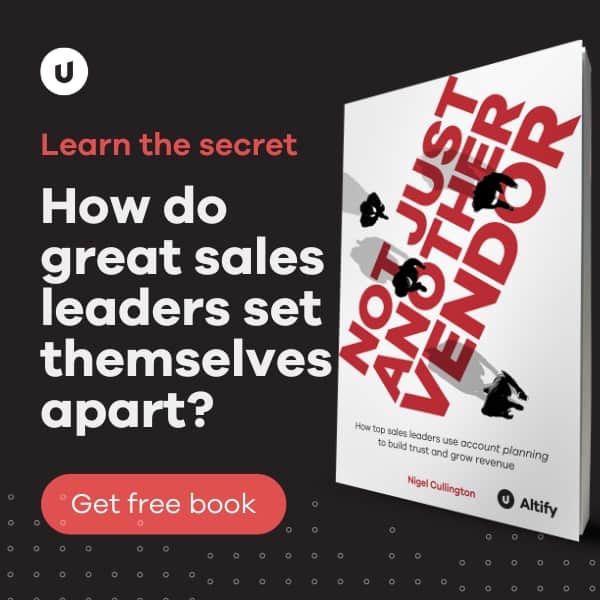My recent post, Why Customers and Suppliers Collide was received very positively. One re-tweeter called it “THE most important thing anyone in sales can read” (thanks @Davidabrock). Over the many years I’ve observed the interaction between sales people and their customers, I’ve often thought that a lot of progress could be made more easily if the sales person really truly considered the emotional journey that a customer takes when making an important buying decision.
To consider the practical implications of that emotional journey I’ve tracked it through the different stages of a sale, what I call the Four Phases of the Buying Cycle. I hope you find this valuable.
* * * * *
The Four Phases of the Buying Cycle
All though the professional buying cycle, customers are concerned about risk and the price of your offering. They seek evidence that you are the best supplier, and need to be assured that you can meet their needs. However, the customer’s primary emphasis changes throughout the buying cycle and they focus on different concerns at different times. It is important to know where you are in the cycle and to understand what’s occupying the customer’s mind at that time.
In a potential departure from traditional wisdom, I have segmented the buying cycle itself into four segments, to include Post-Sale activity for the sales professional. More than ever, a sales person’s key asset is his customer, and it is my belief that he needs to be involved after the deal has been consummated, to maintain the relationship. In the graphic, I chart the relative importance of each concern through the process (a full circle represents high importance).
The stages in the buying cycle are:
- Early in the procurement cycle, the customer will briefly check on price to make sure your offering is in the general area of his expected budget. At this point, it’s all about his needs, his wants and his process. Getting past the first checkpoint requires that you pass the first features test. Can your offering meet the needs of the customer? If not, the price doesn’t matter. So far the customer has little risk, as no major irrevocable decisions are being made. This is the Requirements phase of the buying cycle. Your opportunity to shape the customer’s requirements is strongest in this phase of the buying cycle.
- Leaving the Requirements phase behind and entering the Evidence phase, the customer now requires very specific data from you to substantiate your claims that you can meet the needs that he outlined. You must prove to him that your solution is all it’s cracked up to be. As he invests more time, his risk is increasing but his focus remains pinpointed on your evidence. This will probably include detailed examination of your offering, reference calls to other customers, future support, product vision and more specific price discussions. Likely as not, the customer will reduce his list of potential suppliers at this time. It’s still like buying a car or a house. You’re down to a choice of two or three, all of which meet your needs, each with sufficient evidence to assuage your concerns about whether you’re getting everything you expect – but now you’re getting a little nervous.
- As the customer is making the final choice and is getting ready to sign on the dotted line, the purchase is at its most vulnerable, and the customer is more nervous than at any other time in the cycle. Up to now, there is always a way out – but once the decision is made, it’s done, over, complete. Better not screw up now. This is where the professional sales person understands the need for positive reinforcement and a restatement for the customer of the rationale for the buying decision, which hopefully has been arrived at jointly. In this, the Acquisition stage, all the work done up to now can be for naught if the customer get butterflies and isn’t comfortable to proceed. Risk is uppermost in his mind, and price rears its head again. “So if I’m going do this, you need to give me a deal.” Sometimes the customer needs something extra, or a price concession, to make him feel good about making the decision and to help him over the line. This is particularly true when one person will carry the responsibility for making the decision.
- Risk fades as a factor in the customer’s mind after the purchase is made, only to be replaced by anxiety. As they say, the proof of the pudding is in the eating, and until the new product or service has been fully implemented and bedded in, the customer will still feel vulnerable. You must address that concern if you want to maintain a long-term relationship. Post-Sale, the customer no longer cares about price. Real evidence is needed to prove to him that he made the right decision. Work hard at it, and reward his trust.
Knowing the customer’s perspective at each stage in the buying cycle, you can be extra conscious of the issues that will be to the forefront of his mind. You now have an opportunity to fully align your activities to the specific context of the particular buying phase.



